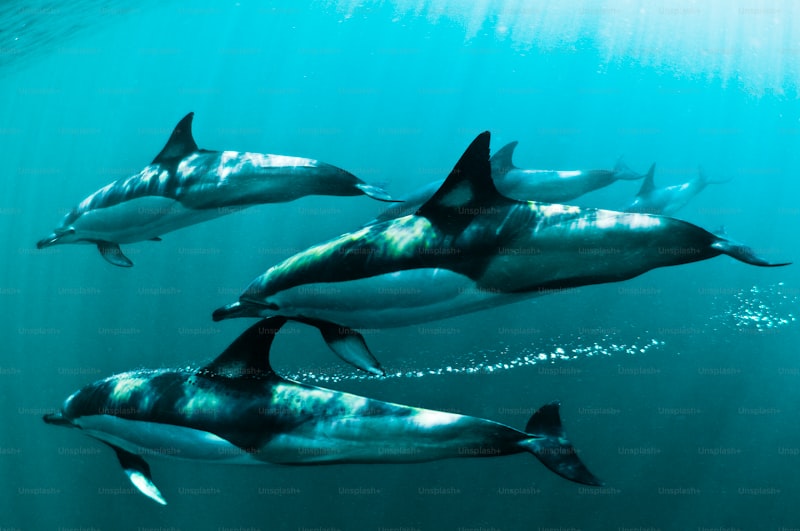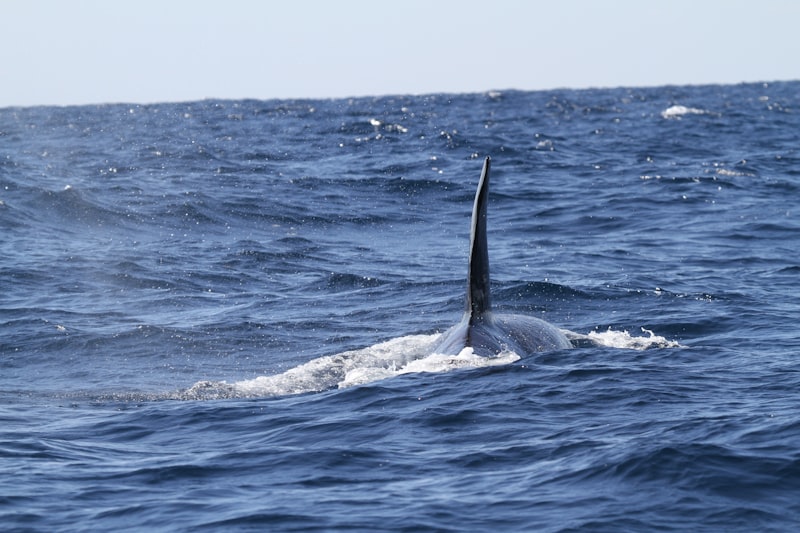One of the most iconic marine species under threat is the sea turtle. These ancient reptiles have roamed the oceans for millions of years, but today, many species are endangered due to human activities. Coastal development disrupts their nesting habitats, while pollution and plastic waste pose grave dangers to their survival. Conservation efforts focus on protecting nesting beaches, implementing fishing gear modifications to prevent accidental bycatch, and raising awareness about the importance of marine sanctuaries.
Another critically endangered marine species is the vaquita, a small porpoise found in the Gulf of California. With fewer than 10 individuals left in the wild, the vaquita is on the brink of extinction primarily due to illegal fishing practices, particularly the use of gillnets to catch another endangered species, the totoaba fish. Conservationists and governments are racing against time to enforce bans on gillnet fishing and establish safe zones for these elusive porpoises.
The plight of marine species also extends to coral reefs, often referred to as the “rainforests of the sea.” Coral reefs support a quarter of all marine life but face unprecedented threats from rising sea temperatures and ocean acidification. Bleaching events, caused by these stressors, can devastate entire reef ecosystems. Conservation strategies include marine protected areas, coral restoration projects, and reducing carbon emissions to mitigate climate change impacts.
Conserving endangered marine species demands collaborative efforts from governments, conservation organizations, and individuals worldwide. By addressing habitat destruction, illegal fishing practices, pollution, and climate change, we can ensure a future where these remarkable creatures continue to thrive in their natural habitats.
Saving Grace: Innovations in Marine Conservation
In the vast expanse of our oceans, a quiet revolution is underway – one that holds the key to safeguarding our planet’s most precious ecosystems. Marine conservation has long been a battle against time, but recent innovations are turning the tide in our favor. From cutting-edge technology to community-driven initiatives, the seas are witnessing a wave of change.
Imagine drones soaring above the waves, not in pursuit of surveillance, but to monitor marine life and detect illegal fishing activities. These unmanned aerial vehicles are not just gadgets; they are guardians of the deep, offering real-time data that empowers authorities to protect vulnerable species and enforce conservation laws more effectively than ever before.

But innovation in marine conservation isn’t confined to the skies alone. Beneath the surface, artificial reefs are springing up like underwater oases, providing sanctuary for fish populations devastated by overfishing and habitat loss. These man-made structures not only replenish biodiversity but also attract tourists, turning conservation into a sustainable economic opportunity for coastal communities.
On land, scientists are harnessing the power of biotechnology to develop eco-friendly alternatives to harmful fishing practices. Imagine a fishing net that dissolves harmlessly in water or biodegradable fish hooks that pose no threat to marine life. These innovations aren’t just reducing our ecological footprint; they’re redefining what it means to fish responsibly in the 21st century.
But perhaps the most inspiring innovation of all is happening in the hearts and minds of people around the world. From grassroots campaigns to global movements, individuals are realizing that the fate of our oceans is inextricably linked to our own. By raising awareness, demanding change, and taking action in their own communities, they are proving that small actions can ripple outwards, creating waves of transformation that reach every corner of the globe.
Innovations in marine conservation are not just about saving our seas; they’re about securing a sustainable future for generations to come. As we navigate the challenges ahead, one thing is clear: by embracing innovation, harnessing technology, and uniting in purpose, we can ensure that our oceans remain a vibrant source of life and wonder for all.
Guardians of the Sea: Strategies to Protect Endangered Marine Life
One of the foremost strategies in safeguarding marine life involves the establishment and enforcement of marine protected areas (MPAs). These designated zones act as sanctuaries where marine species can thrive without the threat of human interference such as overfishing or habitat destruction. By preserving these habitats, we ensure that critical ecosystems remain intact and capable of supporting diverse marine life forms.
Education emerges as a potent tool in the arsenal of marine conservation. By raising awareness about the importance of marine biodiversity and the consequences of human activities, we empower individuals and communities to make informed choices. Through educational programs, outreach initiatives, and media campaigns, we instill a sense of responsibility towards our oceans and the creatures that inhabit them.
Innovative technologies play a pivotal role in modern marine conservation efforts. From satellite tracking of migratory species to underwater drones monitoring coral reefs, technological advancements provide crucial data for informed decision-making and rapid response to environmental threats. By harnessing these technologies, scientists and conservationists can better understand marine ecosystems and implement targeted conservation strategies.
Collaboration between governments, non-profit organizations, and local communities is essential for effective marine conservation. By pooling resources, expertise, and local knowledge, stakeholders can develop comprehensive conservation plans that address the unique challenges faced by different marine habitats and species. This collaborative approach ensures that conservation efforts are sustainable and inclusive, benefiting both marine biodiversity and human livelihoods.
Ultimately, the protection of endangered marine life requires a holistic approach that combines legal frameworks, public awareness, technological innovation, and collaborative partnerships. As guardians of the sea, it is our collective responsibility to safeguard these invaluable ecosystems for future generations. By taking decisive action today, we can ensure a thriving marine environment that sustains life both below and above the waves.
Beyond Borders: Global Efforts to Preserve Threatened Ocean Species
One remarkable initiative is the creation of marine protected areas (MPAs) across different continents. These areas act as sanctuaries where marine life can thrive without the constant threat of human interference. By establishing MPAs, countries not only protect their own waters but also contribute to a larger global network of conservation efforts.
Furthermore, international treaties and agreements play a pivotal role in ocean conservation. Treaties like the Convention on Biological Diversity (CBD) and the Convention on International Trade in Endangered Species of Wild Fauna and Flora (CITES) set standards and regulations to ensure the sustainable use of marine resources and the protection of endangered species across borders.
Scientific research and technological advancements also drive global conservation efforts. Researchers collaborate across continents to study threatened species, their habitats, and the impacts of human activities. Advanced technologies such as satellite tracking, DNA analysis, and underwater robotics provide valuable insights into marine ecosystems, helping scientists develop effective conservation strategies.
Moreover, public awareness and education campaigns are crucial in mobilizing global support for ocean conservation. Through documentaries, social media campaigns, and educational programs, organizations raise awareness about the importance of preserving marine biodiversity and the urgent need for collective action.
The effort to preserve threatened ocean species transcends national boundaries, uniting nations, organizations, and individuals in a shared mission to protect our planet’s most valuable ecosystems. By working together, we can ensure that future generations inherit a healthy and vibrant ocean teeming with life.
Underwater Heroes: Stories of Success in Marine Species Conservation
One such hero of the deep is the hawksbill sea turtle, a graceful marine reptile celebrated for its stunning shell and crucial contribution to coral reef health. Despite facing numerous threats, including habitat loss and poaching, dedicated conservation efforts have seen populations slowly rebound in recent years. Through initiatives focused on nesting site protection and community education, these efforts aim not just to save a species, but to preserve entire ecosystems.
Another inspiring tale comes from the bustling seagrass meadows, where the dugong, often referred to as the “sea cow,” grazes peacefully. These gentle giants play a pivotal role in maintaining seagrass beds, which in turn support diverse marine life and act as vital carbon sinks. Conservationists have worked tirelessly to mitigate threats such as habitat degradation and accidental entanglement, striving to secure a future where these marine grazers can thrive.
In the frigid waters of the Arctic, the plight of the polar bear stands as a stark reminder of the impact of climate change on wildlife. As sea ice diminishes, these iconic predators face unprecedented challenges in their quest for food and shelter. Conservation efforts seek not only to protect polar bear populations through habitat preservation but also to raise awareness about the broader implications of climate change on Arctic ecosystems.
These stories of resilience and dedication remind us of the power of collective action in safeguarding our planet’s most vulnerable inhabitants. Through innovation, collaboration, and a shared commitment to conservation, we can ensure that future generations inherit a world where the wonders of the ocean continue to inspire and amaze.
From the Brink: How Technology Is Rescuing Endangered Marine Animals
One remarkable example is the use of drones in marine conservation. These unmanned aerial vehicles, equipped with advanced cameras and sensors, provide researchers with unprecedented views of remote and inaccessible areas. From monitoring populations of marine mammals like whales and dolphins to surveying nesting grounds of endangered sea turtles, drones enable scientists to gather crucial data without disturbing natural habitats.
Underwater robotics, another groundbreaking technology, ventures into the depths where human divers cannot reach. Remote-operated vehicles (ROVs) equipped with high-definition cameras and sampling tools explore coral reefs and deep-sea habitats, documenting marine life and studying the impact of environmental changes. Such tools are invaluable in studying elusive species such as the elusive coelacanth.
Satellite technology plays a pivotal role in tracking the movements of marine animals across vast distances. By fitting animals with satellite tags, researchers can monitor their migrations, identify critical habitats, and pinpoint areas where conservation efforts are most needed. This data aids in establishing marine protected areas and implementing fisheries management practices that safeguard species at risk.
Artificial intelligence (AI) is revolutionizing marine conservation by analyzing vast amounts of data to predict ecological trends and identify patterns. Machine learning algorithms can sift through years of satellite imagery and acoustic recordings to detect illegal fishing activities and protect endangered species from poaching.
As these technologies continue to evolve, their integration into conservation strategies offers renewed hope for endangered marine animals. By harnessing the power of innovation and scientific ingenuity, we can strive towards a future where our oceans thrive, and endangered species flourish once more.
Blue Hope: Initiatives That Are Revitalizing Marine Biodiversity
Our oceans, vast and mysterious, are not just a backdrop to scenic beaches; they are the lifeblood of our planet. Marine biodiversity, the incredible variety of life in the seas, is under threat from human activities such as overfishing, pollution, and climate change. However, amidst these challenges, there are initiatives around the world that offer a beacon of hope for our oceans and the creatures that call them home.
One such initiative making waves in the conservation world is the establishment of marine protected areas (MPAs). These are designated zones in the ocean where human activities are regulated to protect marine ecosystems and species. Think of them as underwater national parks, where coral reefs, fish populations, and other marine life can thrive without the pressures of overexploitation. MPAs not only safeguard biodiversity but also promote sustainable fishing practices, ensuring a healthier future for both marine life and coastal communities that depend on fishing for their livelihoods.

Another innovative approach gaining traction is the restoration of coastal habitats such as mangroves, seagrasses, and salt marshes. These ecosystems act as natural barriers against coastal erosion and storm surges while providing vital nurseries for fish and other marine species. Organizations and local communities are actively planting mangrove forests and restoring degraded seagrass meadows, recognizing their crucial role in maintaining marine biodiversity and mitigating climate change impacts.
Education and awareness also play a pivotal role in marine conservation efforts. By educating the public about the importance of marine biodiversity and the threats it faces, initiatives aim to foster a sense of stewardship and responsibility towards our oceans. Campaigns on social media, in schools, and through community events raise awareness about sustainable seafood choices, plastic pollution reduction, and the impacts of climate change on marine ecosystems.
While the challenges facing our oceans are significant, the initiatives focused on revitalizing marine biodiversity offer hope and inspiration. Through the establishment of marine protected areas, restoration of coastal habitats, and widespread education, we can work together to ensure that our oceans remain vibrant and teeming with life for generations to come. Together, we have the power to make a difference and secure a blue future for our planet’s most precious resource – the ocean.
Ocean Watch: Key Challenges and Solutions in Marine Species Preservation
Preserving marine species is not just about protecting exotic creatures hidden beneath the waves; it’s about safeguarding the delicate balance of our planet’s ecosystem. As human activity intensifies, so do the threats to marine life. From overfishing to pollution and climate change, the challenges are immense and varied.
Imagine a bustling fish market where the demand for seafood seems insatiable. It’s not just a market; it’s a snapshot of how our consumption habits impact marine biodiversity. Overfishing disrupts the natural food chain, endangering species like tuna and swordfish that play crucial roles in ocean ecosystems. The depletion of these top predators can lead to unexpected consequences, affecting everything from coral reefs to coastal economies that rely on healthy fish stocks.
Pollution presents another formidable adversary. Plastics, chemicals, and oil spills not only mar the ocean’s beauty but also threaten the survival of countless marine species. Sea turtles mistake plastic bags for jellyfish, while seabirds unwittingly ingest small plastic particles. The cumulative effect of such pollution can devastate entire populations and ecosystems, from coral reefs to mangrove forests.
Climate change exacerbates these threats. Rising ocean temperatures and acidification pose existential challenges to marine life. Coral bleaching events, driven by warming seas, transform vibrant coral reefs into ghostly skeletons devoid of life. Species adapted to specific temperature ranges find themselves struggling to survive in rapidly changing environments, where traditional habitats become inhospitable.
Yet, amidst these challenges, there is hope. Conservation efforts and scientific advancements offer promising solutions. Marine protected areas act as sanctuaries, providing safe havens where fish stocks can replenish and ecosystems can recover. Sustainable fishing practices promote responsible harvesting, ensuring that future generations can also enjoy the bounty of the seas.
Innovative technologies, from satellite tracking of marine migrations to biodegradable plastics, are revolutionizing our approach to marine conservation. By harnessing the power of innovation and international cooperation, we can turn the tide in favor of marine species preservation. After all, protecting the oceans isn’t just about safeguarding marine life—it’s about preserving our planet’s life support system for generations to come.
Frequently Asked Questions
What are the main threats to marine species
Learn about the primary threats facing marine species, including habitat destruction, overfishing, pollution, climate change, and ocean acidification. Understand how these factors impact marine ecosystems and what can be done to mitigate these threats.
How do scientists determine if a marine species is endangered
Learn how scientists assess the endangered status of marine species, using criteria like population size, habitat range, and threats faced. Methods include field surveys, population modeling, and analysis of habitat loss.
What are some successful marine conservation initiatives
Discover successful marine conservation initiatives around the globe, highlighting innovative approaches that protect ocean ecosystems and promote sustainable practices.
How can individuals contribute to marine conservation efforts
Learn how individuals can contribute to marine conservation efforts with practical steps such as reducing plastic use, supporting sustainable seafood choices, participating in beach clean-ups, and advocating for marine protection policies.
Why is conserving marine species important
Learn why conserving marine species is crucial for maintaining biodiversity, supporting ecosystems, and sustaining global fisheries. Discover how protecting marine life contributes to environmental balance and human well-being.


